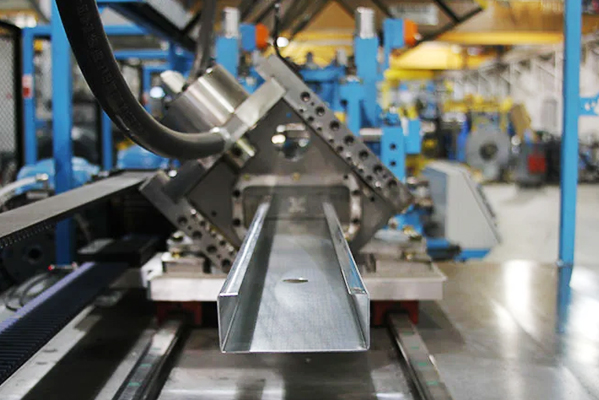Navigation Menu
Contact Us
- Email:
- info@wxavatar.com
- Address:
- Yurong Village, Yuqi Street, Huishan District, Wuxi, China.
Release Date:Apr 19, 2025 Visit:3 Source:Roll Forming Machine Factory
Steel trusses are engineered structural components widely used in buildings, bridges, and industrial facilities due to their strength and versatility. Their fabrication involves precise design, material selection, and assembly techniques to ensure structural integrity. Below is an overview of the manufacturing process.
1. Design and Engineering
Structural engineers calculate load requirements, span lengths, and connection details using specialized software.
Detailed drawings specify member sizes, angles, and welding/bolting patterns.
Fabrication plans are generated, optimizing material usage and minimizing waste.

2. Material Selection and Preparation
High-strength steel (such as ASTM A36 or A572) is selected based on structural demands.
Steel sections (angles, channels, tubes, or I-beams) are cut to required lengths using saws, shears, or plasma cutters.
Surfaces may be cleaned (sandblasting or grinding) to ensure proper weld adhesion.
3. Fabrication of Components
Cutting: CNC machines or manual tools shape steel members per design specifications.
Punching/Drilling: Holes are created for bolted connections where required.
Bending: Cold or hot bending forms curved or angled sections if needed.
4. Assembly and Joining
Jigging: Components are clamped into a jig (temporary frame) to maintain alignment during assembly.
Welding: Members are joined using arc welding (MIG, TIG, or stick welding) for permanent connections.
Bolting: High-strength bolts may be used for field assembly or adjustable connections.
5. Surface Treatment and Finishing
Welds are inspected for defects (cracks, porosity) via visual or ultrasonic testing.
Surfaces are treated with anti-corrosion coatings (primers, galvanization, or paint).
Labels or markings are added for identification during installation.
6. Quality Control and Testing
Dimensional accuracy is verified against engineering drawings.
Load-testing may be conducted on sample trusses to confirm performance.
Documentation (mill certificates, weld logs) is prepared for compliance.
7. Transportation and Installation
Trusses are shipped to the construction site, often in segments for large spans.
Cranes or lifting equipment position them onto supports, where they are bolted or welded into place.

Conclusion
The production of steel trusses combines precision engineering, skilled fabrication, and rigorous quality checks. By following standardized manufacturing processes, steel trusses achieve consistent performance in diverse structural applications. Proper design and fabrication ensure durability, load-bearing capacity, and long-term reliability.